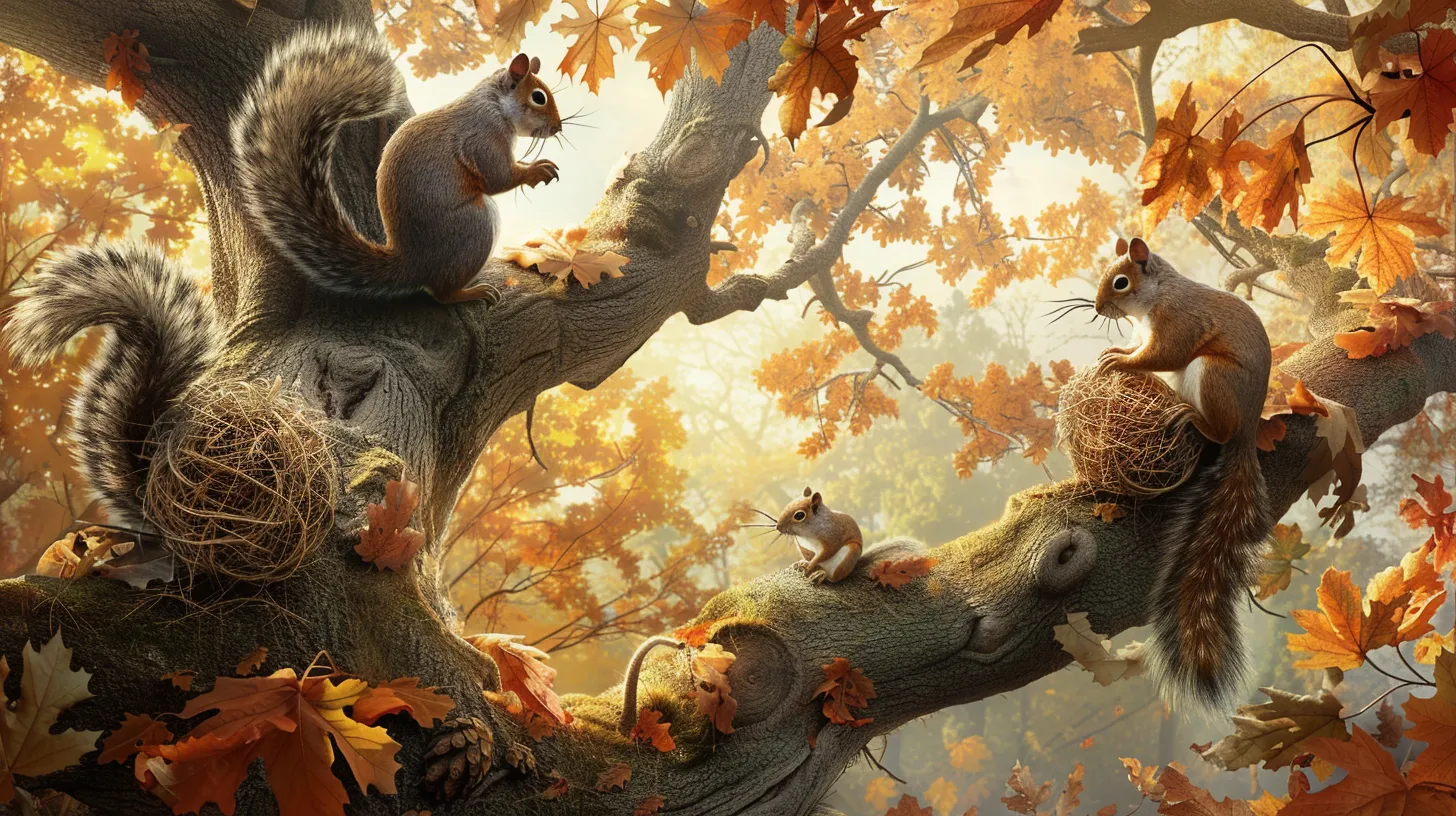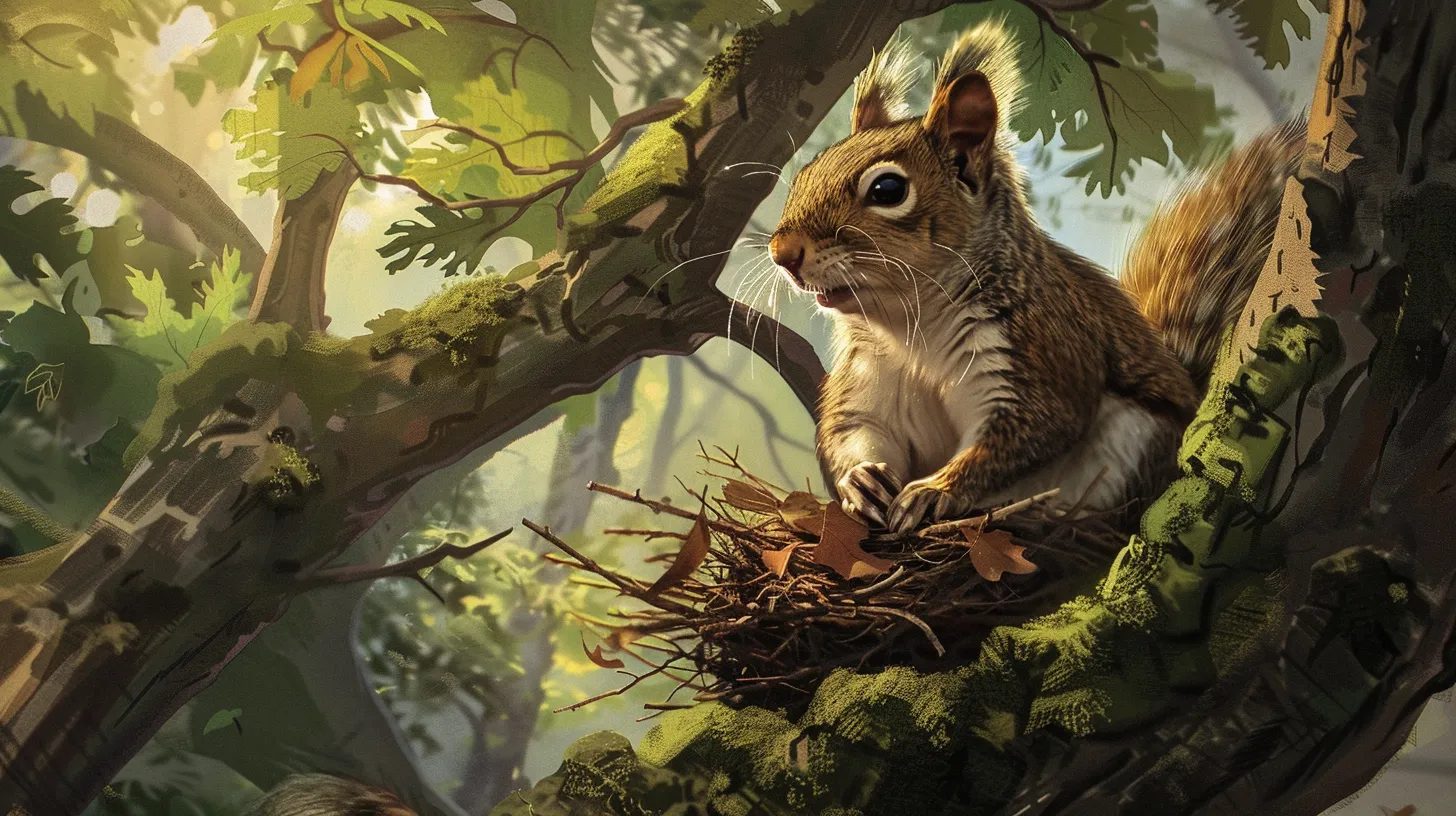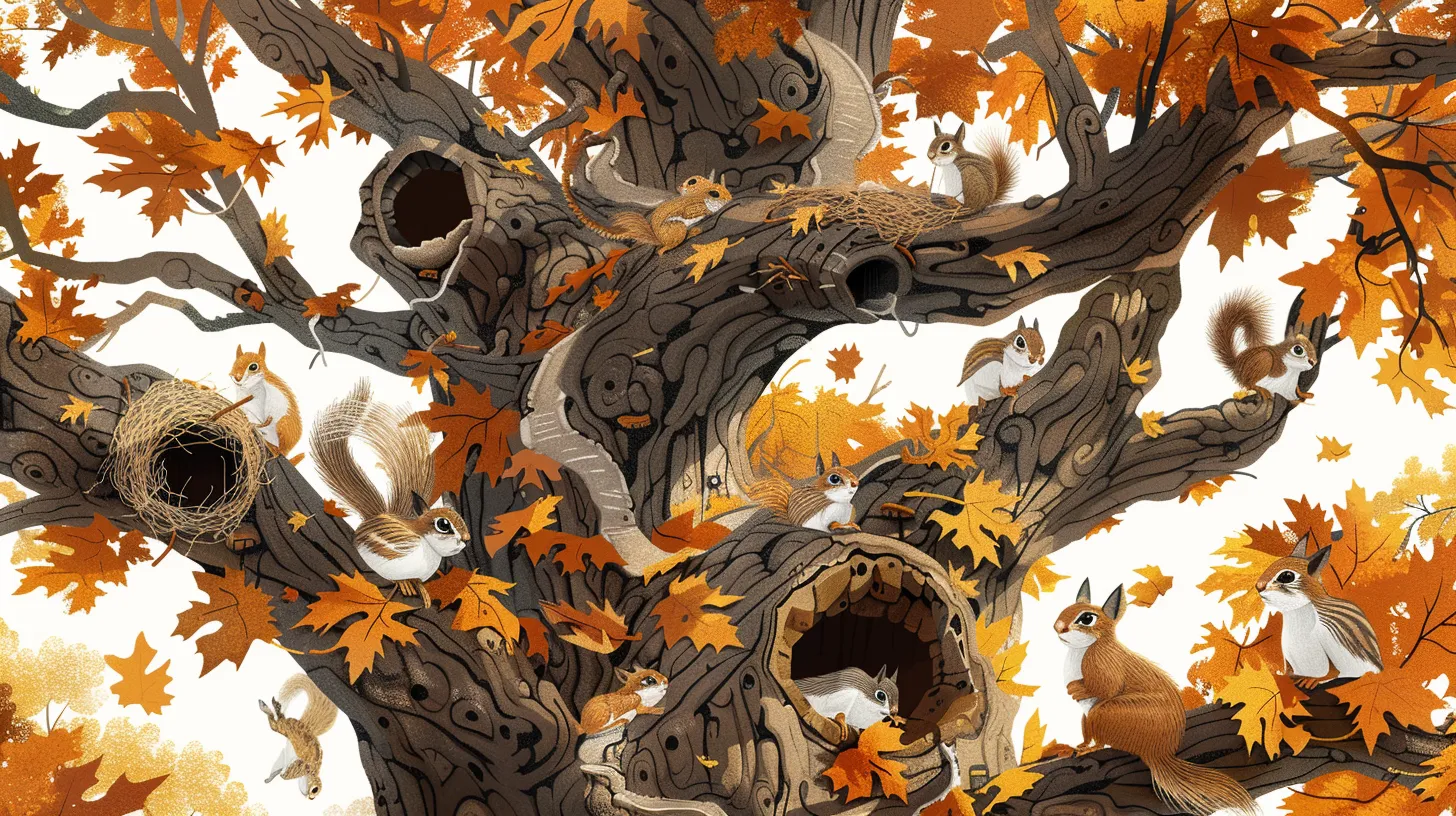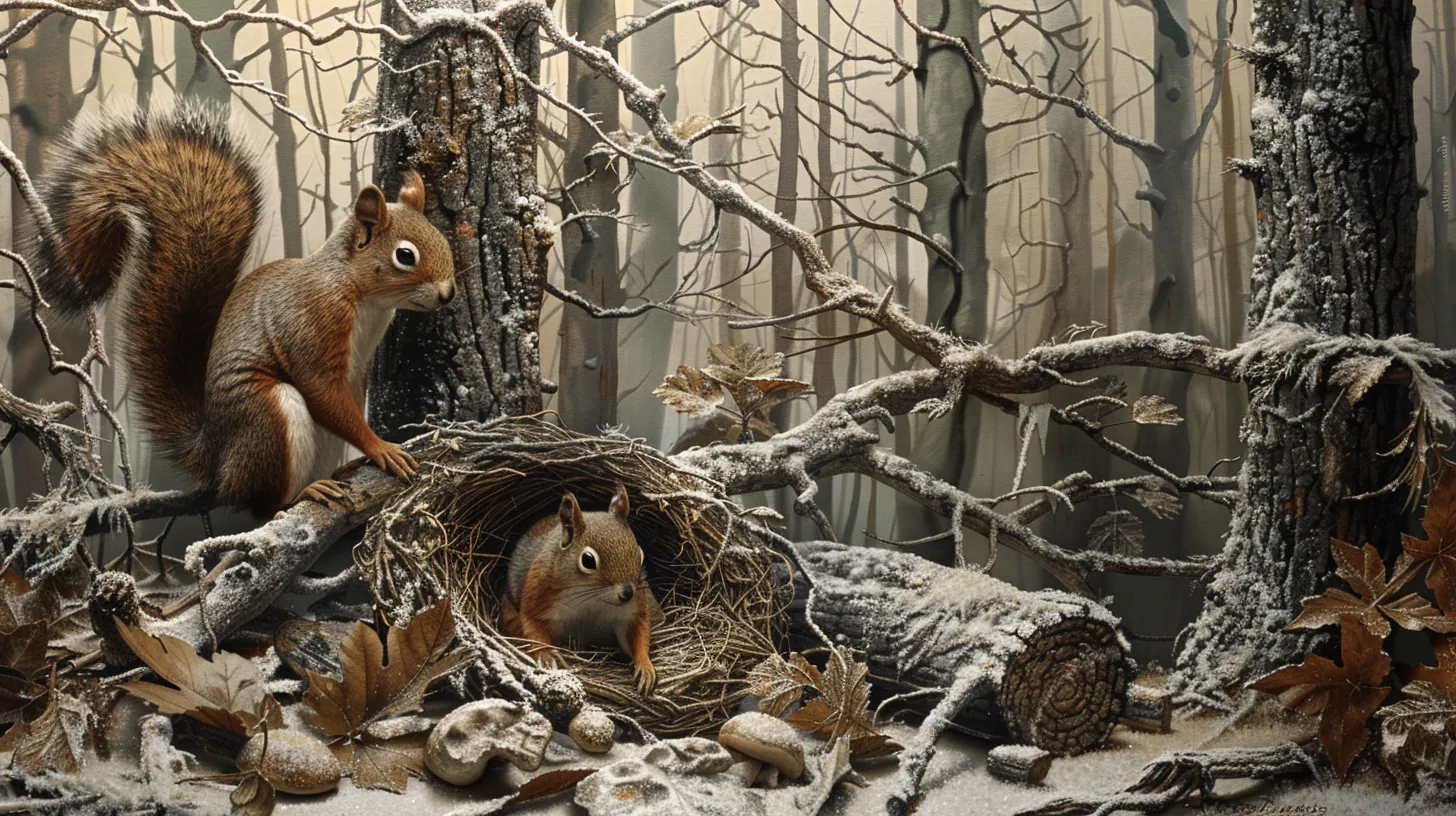Squirrels mostly construct their nests in early spring and late summer, strategically timing their building around their breeding necessities and seasons. This period coincides with a peak in available construction materials like twigs, leaves, and moss. The construction of nests, commonly known as dreys , is essential for providing safe havens from predators and severe weather, and for nurturing and raising young squirrels in a stable environment . These nests are not just shelters but also represent an intricate behavior synced with natural cycles . Exploring further will reveal the profound relationship between these creatures' life patterns and their habitats.
Squirrel Nesting Seasons

Squirrels primarily construct their nests during the early spring and late summer , aligning their building activities with breeding needs and seasonal changes. This timing is critical as it prepares the squirrels for the demanding winter survival ahead and guarantees the availability of resources for their young. The peak of nest-building activity occurs in June and July, a period when materials like twigs, leaves, and moss are abundant and ideal for constructing sturdy, insulated shelters.
The choice of nest locations is strategic, aimed at minimizing threats from predators and protecting against extreme weather . High tree branches or dense foliage are preferred sites, offering safety and a conducive environment for raising young squirrels. During these squirrel nesting seasons, nests serve not only as a physical shelter but also as a space for family bonding and nurturing offspring, which is essential during the breeding seasons.
Understanding these seasonal patterns of nest construction and their synchronization with the squirrels' reproductive cycles reveals sophisticated survival strategies . By building during specific times of the year, squirrels optimize their young's chances of survival, hence perpetuating their species. These insights into squirrel behavior underscore the complexity of their life systems and their adaptability to environmental challenges.
Reasons Behind Nest Construction

While the timing of nest construction is closely tied to reproductive and survival imperatives , the primary reasons squirrels engage in this activity are multifaceted. Primarily, squirrels construct nests to create a secure shelter that protects them from predators and harsh weather conditions . These carefully crafted structures are essential for their survival, especially during the colder months when exposure can be fatal.
Nest construction also plays an important role in the reproductive cycle of squirrels. These nests provide a safe environment for raising young , shielding them from predators and providing a stable, warm habitat for growth and development. The adaptability of squirrels in their nest construction is evident as they modify their building techniques and locations based on seasonal behaviors and environmental conditions. This adaptability ensures that the nests are well-placed and constructed to meet the changing demands of their natural surroundings.
Thus, understanding the reasons behind the construction of squirrel nests offers valuable insights into their complex survival strategies. These strategies are inherently linked to their seasonal behaviors, showcasing a remarkable synchronization with the cycles of nature, which dictates not only when but also how these critical shelters are built.
Materials Used in Nests

In constructing their nests, squirrels select a variety of natural materials such as twigs , leaves, moss, bark, and feathers, which are intricately woven to form a durable and comfortable shelter . The nest construction process begins with the collection of twigs, which are important for the structural support of the nest. These twigs are skillfully arranged to create a robust spherical frame , essential for the overall stability and longevity of the habitat.
Once the frame is established, squirrels incorporate leaves and moss to enhance the insulation of the nest. This layer is essential as it helps maintain a stable temperature within the nest, protecting the inhabitants from extreme weather conditions. Additionally, the use of moss adds a soft texture, increasing the comfort level of the nest's interior.
To further optimize comfort, the inner cavity of the nest is meticulously lined with shredded bark, grass, and more leaves. This combination of materials not only provides a soft bedding area but also adds to the insulation properties of the nest. The integration of feathers into the lining is a common practice, as these provide an extra layer of warmth and comfort, ensuring that the squirrel's home is both secure and snug.
Nesting Habitats Explored

Exploring the preferred nesting habitats of squirrels offers further understanding of their complex behavior and environmental adaptations. Squirrels choose to construct their nests, known as dreys , high in the tree forks , leveraging these natural structures for stability and protection.
The strategic location not only shields them from predators but also reduces exposure to harsh weather conditions, emphasizing their importance in selecting ideal nesting sites.
Dreys are intricately built with materials like leaves, twigs, moss, and bark, all woven together to create a cozy shelter . This construction is essential for the survival and proliferation of squirrels , serving multiple purposes including raising young and food storage.
The choice of tree forks as a base for these nests showcases squirrel's resourcefulness and a deep-rooted understanding of their habitat's offerings.
The seasonal behaviors of squirrels are also reflected in their nesting habits. As seasons change, the needs for shelter and protection evolve, prompting squirrels to either reinforce their existing homes or construct new ones in response to environmental cues.
This cyclical pattern of nest building highlights their complex interaction with the ecosystem and underscores the significant role of dreys in their life cycle.
Impact of Climate on Nesting

Climate conditions greatly influence squirrel nest-building behaviors , impacting both the timing and materials used in construction. In colder regions, squirrels start their nest-building schedules earlier to guarantee adequate protection against harsh weather. They specifically select insulating materials that provide better thermal protection, adapting their construction techniques to the environmental demands. This adaptability is vital for their survival, reflecting a sophisticated response to seasonal changes.
In contrast, warmer climates see a shift in foraging priorities which may delay nest construction. Squirrels in these areas are less pressured by the immediate need for thermal shelter , allowing them to allocate more time to gather food resources. However, this does not diminish the strategic planning of their nesting behavior, as they must still prepare for any sudden extreme weather events that could threaten their safety.
Such events force squirrels to either reinforce their existing nests or rebuild them entirely, emphasizing the importance of robust construction for protection. The impact of climate on these behaviors underscores the flexibility of squirrels to adjust their life cycles . Their ability to modify nesting schedules and material choices in response to climate variations highlights a complex interaction between wildlife and their ever-changing ecosystems .










